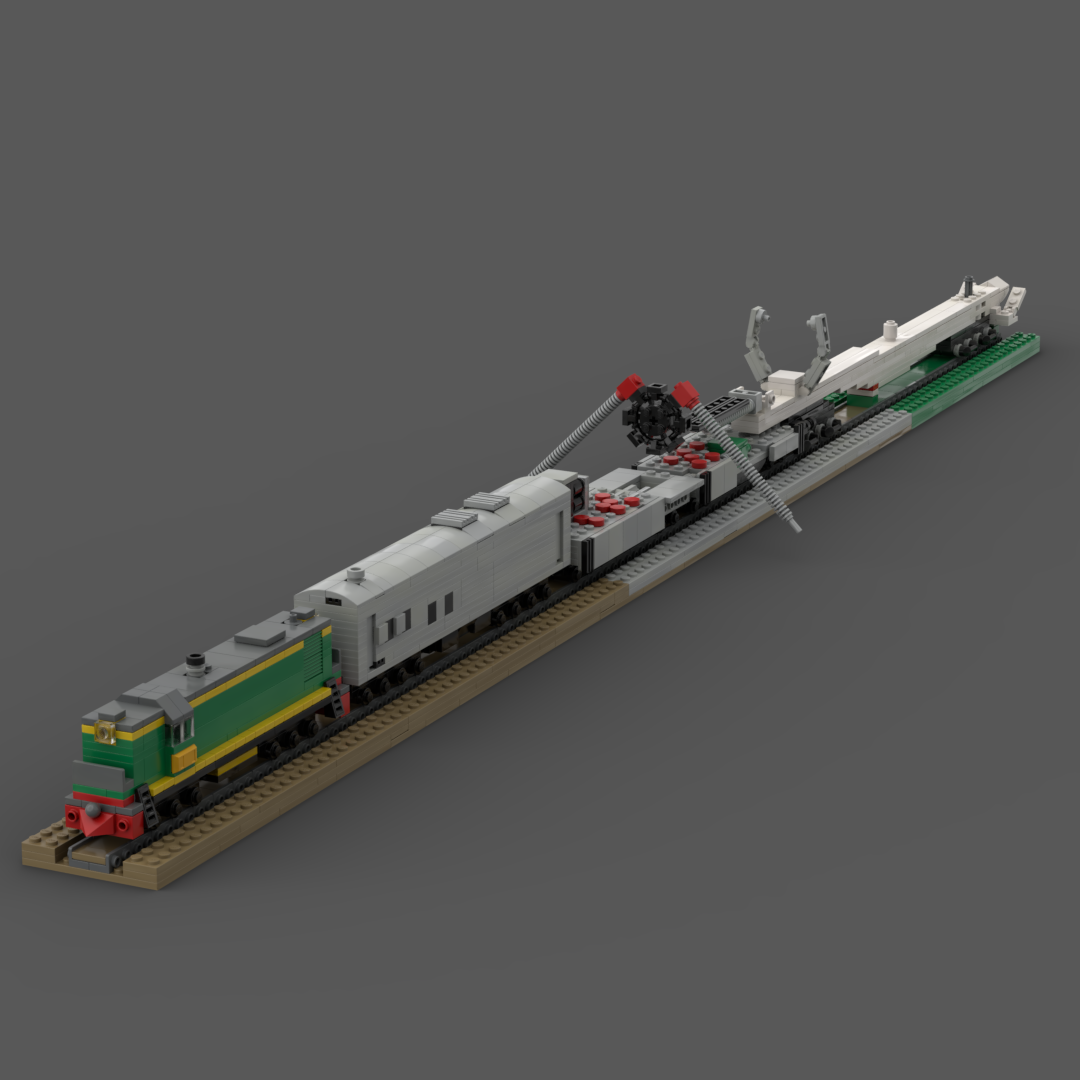
LEGO Designer:
Damian Bailey (DamoB)
Designed: July 2020
Categories:
Support Vehicles and Misc.,
All,
Space Agency - Roscosmos
All four existing launch pads for the Proton rocket at Site 81 and Site 200 in Baikonur feature similar design. The rail transporter with the assembled but unfueled rocket in horizontal position rolls in with its front chassis on top of a stationary hydraulic erector designated 8U260 of the launch pad. The device then rotates its arm 90 degrees and installs the rocket together with its railway transporter and its front chassis vertically onto the launch platform. The rear chassis of the transporter remains on the railway.
After Proton is installed securely one six supports of the launch pad, the transporter’s fixtures holding the rocket are retracted and the erector rotates back into its storage position below the pad level, simultaneously lowering the transporter back on the rail tracks. The transporter than towed away by a locomotive.
Downloads
Further Information and References
Designer Notes
While waiting for some bricks to arrive I found myself with Stud.io open and some time on my hands. Nico Daams had shared an excellent version of his Soyuz launch platform which included the train which takes the Soyuz to its launch site. I already had an affinity for the Proton rocket and a bit of investigation told me that no one had yet modelled the train for the Proton, so I decided to take it on as a Stud.io side project, never intending for it to see the light of day in actual bricks. To cut a long story short, the side project rapidly changed into my focus and ended up with these instructions.
Baikonur has its own intra-site 1520mm gauge railway network, the largest industrial railway on the planet. The railway is used for all stages of launch preparation and all spacecraft are transported to the launchpads by special trains. The Proton train consists of five cars which are, from back to front: the transportation/erector unit; two bridging flatcars; a thermal conditioning car; and the engine.
Information on the trains has been hard to obtain but I started with the assumption that the flatcars were standard Russian design therefore 14.62m long. From there, there are a few scale drawings and a number of photos which allow the rest of the dimensions to be inferred and, when built in Stud.io with my Proton-M rocket attached (which I know to be the right size), it looked close enough for me to be happy that it was correct. The greatest challenge was the track which at the correct scale should be 1. 73 studs wide as this is pretty much impossible to create in Lego and I didn’t want to go with the standard Lego railway. I compromised at 2.5 studs.
This build is broken down into the five parts of the train and four pieces of track – the first piece of track covers both the transportation/erector and the first bridging flatcar.
I hope you enjoy building it as much as I enjoyed designing it, and I’m looking forward to seeing some of them out in the wild!
Part count: 1104 bricks, 195 lots.
| Unit | width | length | height |
|---|---|---|---|
| Studs | 20.4 | 127.2 | 11.7 |
| Inches | 6.4 | 40.1 | 3.7 |
| Centimetres | 16.3 | 101.8 | 9.4 |
Related Posts
None found